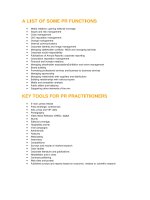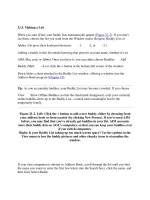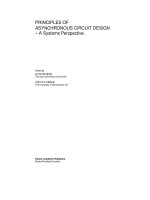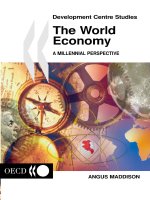form a list perspective
Bạn đang xem bản rút gọn của tài liệu. Xem và tải ngay bản đầy đủ của tài liệu tại đây (393.71 KB, 8 trang )
Mrs. Catherine Wishart
Adjunct Instructor
Copyright © 2010. All rights reserved.
What is the Formalist
Perspective?
Literature can be read through a variety of lenses.
The formalist perspective concentrates on the form of the literature itself.
“Formalist criticism regards literature as a unique form of human
knowledge that needs to be examined on its own terms” (Kennedy 1468).
Questions that may be answered from a formalist perspective include:
What is the structure of the piece?
What imagery is used?
What symbols help convey a message?
What is the theme?
Why Use the Formalist
Perspective?
The formalist perspective began in Russia in the early
1920s.
In 1917, the Russian Revolution occurred.
Prior to 1917, Russia romanticized literature and
viewed literature from a religious perspective.
After 1917, literature began to be observed and
analyzed. The formalist perspective allowed literature
to be viewed through a scientific lens.
Formalism allows the reader to analyze a literary
piece with complete objectivity.
A Formalist View of Literature Discounts or
Ignores Certain Aspects of Literature
The name of the author is not important.
The time in which the author lived is not important.
Any cultural impact on the author’s life is not
important.
The political beliefs of the author are not important.
The actual reader is not important.
Formalists Focus on Specific Aspects
Formalists pay special attention to “the formal features of the
text – the style, structure, imagery, tone, and genre” (Kennedy
1468).
Not examined in isolation – “what gives a literary text its special
status as art is how all its elements work together to create the
reader’s total experience” (Kennedy 1468).
Great literature is “universal.”
A universal message is a message that transcends time and culture.
A universal message reveals a great truth about the human
condition.
Specific passages in great works of literature can be closely
analyzed to determine its message and the constructs utilized to
convey the message.
Formalists analyze the tension and ambiguity in a piece:
Tension: “the way elements of a text’s language reflect conflict and
opposition” (DiYanni 1561).
Ambiguity: “the ways texts remain open to more than a single,
unified definitive interpretation” (DiYanni 1561).
Formalism Ignores Peripheral Aspects
Formalists believe that looking at the psychology and
biography of the author inform the writing process, not
the composition itself (Kennedy 1469).
Formalism does not evaluate or consider the religious,
moral, or political value of a piece.
Formalism does not evaluate or consider symbolism in a
piece.
Formalism strives to force literary or artwork to stand on
its own – people (i.e., author, reader) are not considered
so the piece can be analyzed as a separate, independent
entity.
Because formalism ignores peripheral aspects, it is very
limiting in its effectiveness to analyze literature.
A Checklist of Formalist Critical
Questions
How is the work structured or organized? How does it begin? Where does it
go next? How does it end? What is the work’s plot? How is its plot related to
its structure?
What is the relationship of each part of the work to the work as a whole? How
are the parts related to one another?
Who is narrating or telling what happens in the work? How is the narrator,
speaker, or character revealed to readers? How do we come to know and
understand this figure?
Who are the major and minor characters, what do they represent, and how do
they relate to one another?
What are the time and place of the work – its setting? How is the setting
related to what we know of the characters and their actions? To what extent is
the setting symbolic?
What kind of language does the author use to describe, narrate, explain, or
otherwise create the world of the literary work? More specifically, what
images, similes, metaphors, symbols appear in the work? What is their
function? What meanings do they convey? (DiYanni 1562).
(DiYanni, Robert. Literature Approaches to Fiction, Poetry, and Drama. 2nd ed. Boston: McGraw-Hill, 2008).
Works Cited
DiYanni, Robert. Literature Approaches to Fiction, Poetry, and Drama.
2nd ed. Boston: McGraw Hill, 2008. Print.
Guerin, Wilfred L. et al. A Handbook of Critical Approaches to
Literature. 5th ed. NY: Oxford UP, 2005. Print.
Kennedy, X. J. and Gioia, Dana. Literature: An Introduction to Fiction,
Poetry, Drama, and Writing. Revised edition for Burlington County
College. NY: Pearson, 2011. Print.









